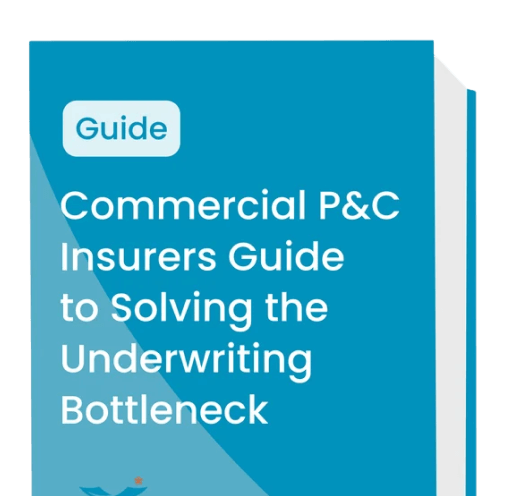
Best Practices for Implementing AI in Insurance
Moving fast doesn’t have to mean more risk
Artificial Intelligence (AI) and Machine Learning (ML) are game changers for the insurance industry. They offer some exciting new opportunities for streamlining document processing and data collection. With new opportunities come new challenges to implement AI tools effectively.
There is some risk involved early on in the process. What might seem like small decisions during planning and implementation can have a significant downstream impact on your company’s revenue and the Total Cost of Ownership (TCO) of your AI solution.
Best practices for implementing insurance AI at speed
Here are a few simple but effective best practices you can follow during the early phases of your AI deployment that will reduce risk for your company without compromising the speed at which you get your new technology into production.
1. Know what success looks like
Before anything else, you must clearly define what “success” for your AI deployment will mean. Start by setting specific, measurable objectives that align with your company's strategic goals. Setting and sharing clear goals aligns all the different processes happening during implementation and provides a way to gauge concrete progress.
Identify relevant metrics to measure your progress towards meeting those goals. These metrics must be quantifiable. For instance, if improving underwriting processing efficiency is a priority, your success metrics should directly reflect enhancements in this area, such as processing time per document or the number of submissions closed per underwriter.
2. Identify barriers to success
In project planning, you need to know where you’re going, and you also need to know what stands in your way. When deploying AI, one of the potential barriers to consider is your employees' perspective on AI and their willingness to learn and embrace this new technology. Leaders should engage in open dialogue with their teams to understand existing perceptions of AI and the company’s AI deployment plans.
It is also vital to understand operational-level barriers. Look to map out how individuals involved in tasks like underwriting submission review will work together with the new AI tools. You want to reveal any concerns for team readiness and any potential overlooked challenges.
3. Find the quick win
This is an important tactic for any software deployment, AI or otherwise. Don’t look to solve every problem in one fell swoop. Instead, tackle a well-defined problem with a realistic chance of short-term success. Your goals are:
- To validate that your new AI can have an immediate impact.
- To generate measurable results you can show leadership.
- Build the confidence and investment of your stakeholders and staff.
You want that confidence and practical experience generated quickly so you can leverage them to tackle more complex problems in the future. This strategy is not about cutting corners or simplifying issues to the point of triviality. Rather, it's about smart prioritization—choosing battles you are well-equipped to win, are valuable to your business, and will demonstrate AI's tangible benefits in your organization.
Download our free self-assessment worksheet to see if your company could benefit from AI-powered document processing.
4. Bring in stakeholders to achieve those quick wins
Getting quick wins is much easier when everyone is rowing in the same direction. You need your internal teams in alignment, including IT, finance, underwriting, and claims. But don’t forget to bring external stakeholders into the process where appropriate, including vendors, service providers, and business partners. Lack of coordination among these groups can delay or even derail your AI deployment.
You’re looking to involve individuals who have the necessary expertise and authority and those who are genuinely invested in your AI project's success. Each stakeholder should bring something valuable to the table, whether it's technical know-how, financial insight, knowledge of the underwriting processes in your organization, or market knowledge.
5. Use stakeholders to build your roadmap
Insurance tends to be more risk-averse than other industries, especially to changes in business operations. That often leads to novel, powerful solutions like AI, not making it beyond the proof of concept (PoC) stage.
To get AI into production in such a risk-averse culture, you should task your stakeholders with developing a clear, practical AI service roadmap right from the outset. A technology “roadmap” is a high-level strategic plan for how your business will deploy and use information technology. For example, you would map out expected projects like migrating the company's data to new cloud infrastructure or deploying a new AI data processing tool.
An IT roadmap communicates all planned technological changes and upgrades, ensuring all stakeholders are aligned with the organization's IT strategy and how projects interconnect. Ultimately, by leveraging their stakeholders' collective expertise and commitment, insurers can mitigate many unnecessary risks in deployment and help their organization pivot from cautious experimenters to industry innovators.
6. Leverage your SMEs
The key to quickly generating value from AI projects is leveraging your subject matter experts (SMEs) to train the AI. Not only does that speed up the project lifecycle, but it also puts easy-to-use AI tools in the hands of your business SMEs. They are best suited to managing highly nuanced, experienced-based work. The tools you give the SMEs should learn from them directly to ensure it's being done as effectively as possible. For example, the exceptions encountered in underwriting paperwork and the types of unstructured data an AI might encounter while helping process submissions.
Furthermore, the tools provided for this purpose must be intuitive and easy to use so they don’t require extensive training. You are looking for something purpose-built for business users that does not require complex configuration or tax your IT resources during training and deployment. This accessibility ensures that experts can focus on applying their knowledge rather than grappling with complex software, leading to more efficient and effective AI training processes.
7. Perform continuous monitoring and improvement
AI agents are dynamic systems requiring consistent monitoring and updates to ensure optimal performance. Take the metrics you established earlier in your implementation project and develop a procedure to monitor them regularly.
It is important to assess the effectiveness of your AI solution in addressing the identified problem and to understand its impact on all stakeholders and the broader environment. This requires employing reliable and easy-to-interpret metrics relevant to your objectives. Compare live performance against your established baselines and benchmarks to understand your AI’s performance better.
Additionally, it's vital to stay alert for errors and oversights that might emerge from AI data processing and address these issues promptly. Look for an AI tool that offers explainability and traceability of its decision-making.
8. Pick the right tech for the right problem
For teams that handle largely structured and standardized documents, leveraging a pre-trained AI solution can be the most cost-effective and efficient approach. These solutions are designed to understand and extract data from documents that follow a consistent format, such as invoices, purchase orders, bank statements, and other well-structured forms. By utilizing pre-trained models, insurance companies can quickly implement data extraction processes with high accuracy, significantly reducing manual data entry and associated errors.
On the other hand, teams that need to process complex, unstructured, or just plain messy documents require a more adaptable AI solution. Due to their variability, documents that might include free-form text, handwritten notes, or non-standard layouts pose significant challenges for pre-trained AI models. In such cases, an AI solution that business users can train themselves to recognize specific content is essential. This level of control and adaptability is crucial for handling diverse document types and extracting valuable insights from them effectively during the underwriting process and other insurance workflows.
See how SortSpoke can improve your underwriting process - Book a discovery call today







